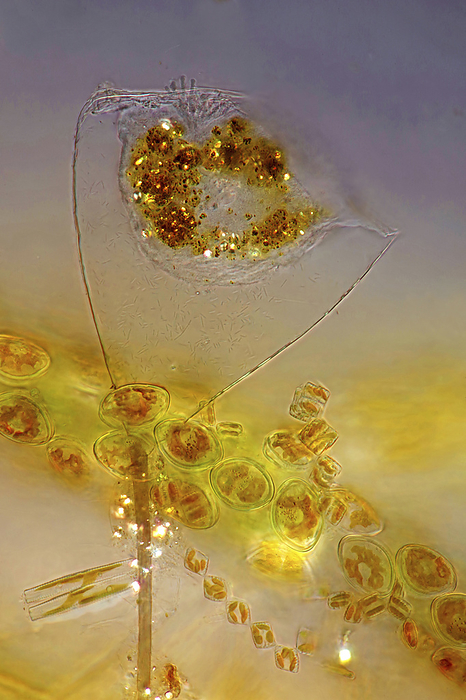
RM
Suctoria and diatom algae, polarised light micrograph
Suctoria and diatom algae, polarised light micrograph. Suctoria (funnel shape, upper centre) are aquatic organisms, found most commonly in freshwater habitats. They obtain food through specialised suctorial tentacles that allow them to fasten themselves to their prey. Diatoms (round shapes, at bottom) are single-celled photosynthetic algae, of which there are about 100,000 species. They have mineralised cell walls that contain silica and provide protection and support. They form an important part of the plankton at the base of the marine and freshwater food chains. their prey. Magnification: x186 when printed 10 centimetres wide., by MAREK MIS/SCIENCE PHOTO LIBRARY

More
Top Categories
